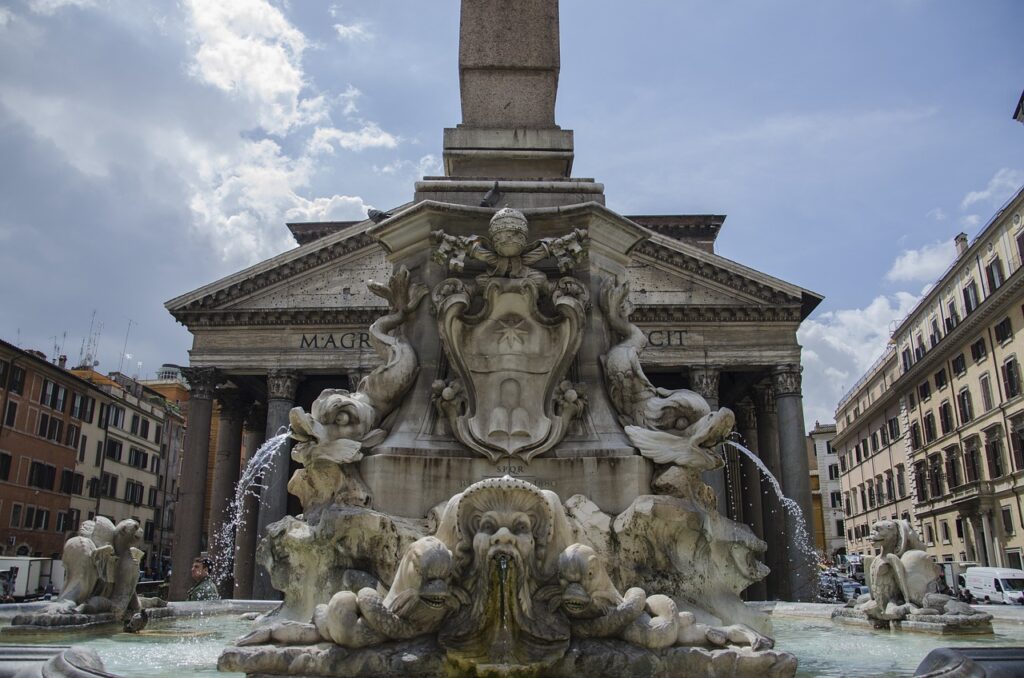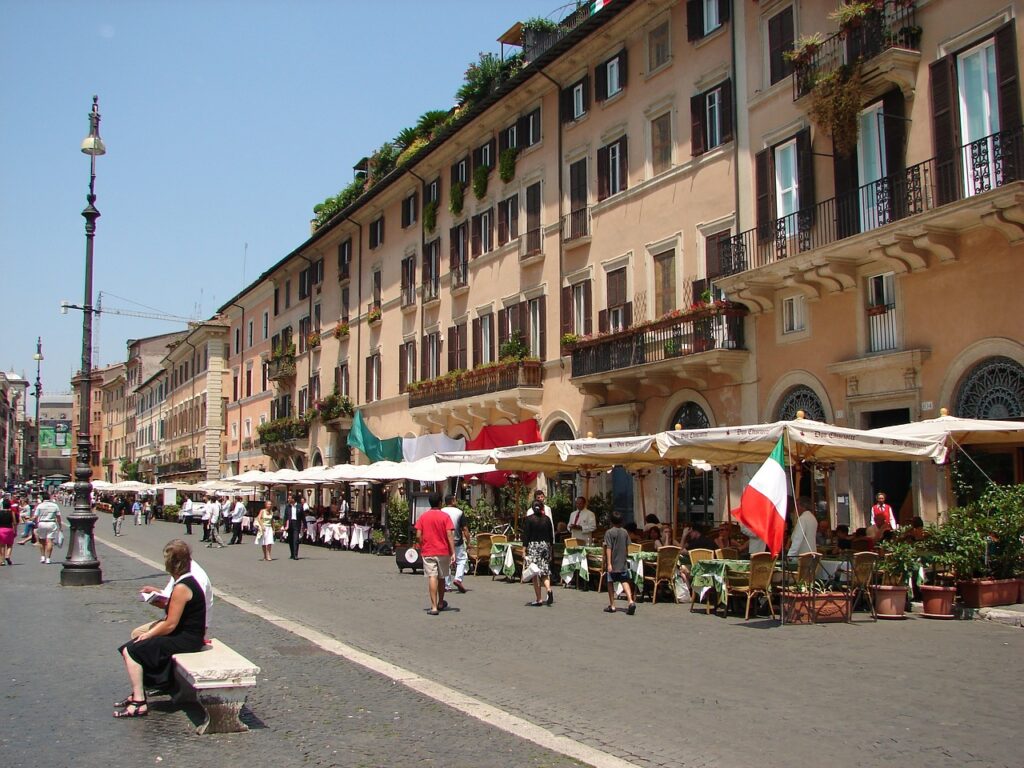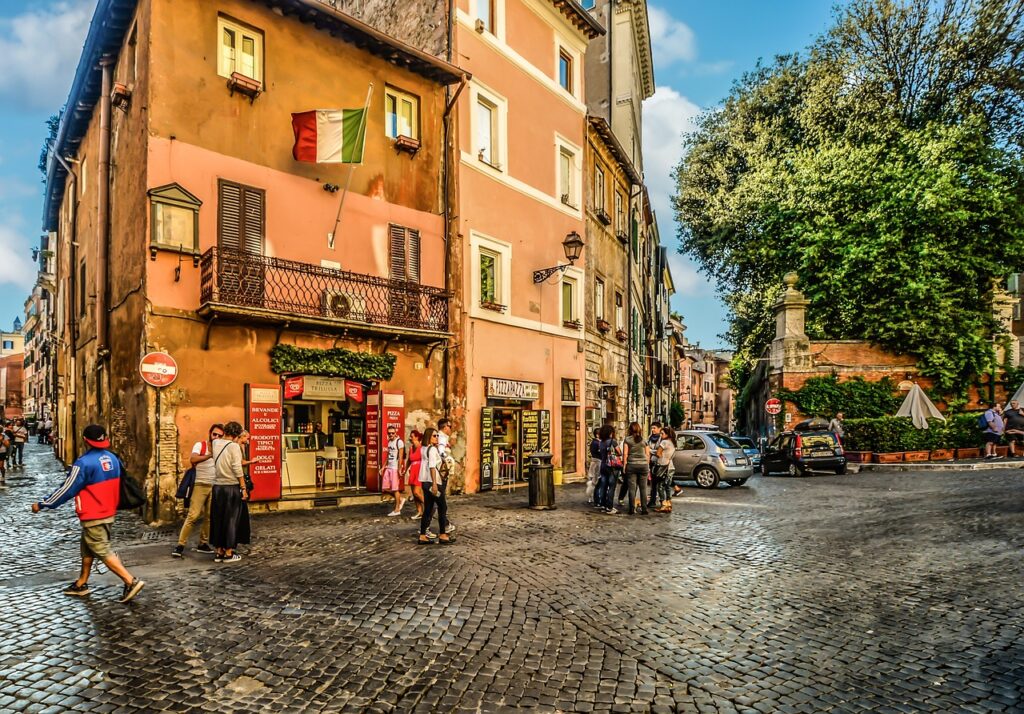Welcome to Rome, a city where history whispers from every cobblestone, where the past coexists with the present in a seamless tapestry of culture and heritage. Prepare to be captivated as we delve into the heart of this ancient metropolis, uncovering its most iconic landmarks and hidden gems.
1. The Colosseum:
Step back in time as you stand before the imposing facade of the Colosseum, an architectural marvel that embodies the grandeur of ancient Rome. Built in AD 70-80, this colossal amphitheater once hosted gladiatorial contests, wild animal hunts, and mock naval battles, captivating audiences of up to 80,000 spectators. As you wander through its labyrinthine corridors and tiers, imagine the roar of the crowd and the clash of swords that once reverberated within its walls. Gain insight into the engineering prowess of the Romans as you admire the innovative construction techniques that have ensured the Colosseum’s enduring legacy.

2. Roman Forum:
Adjacent to the Colosseum lies the Roman Forum, a sprawling archaeological complex that served as the political, religious, and commercial center of ancient Rome. Walk in the footsteps of emperors and senators as you explore the ruins of temples, basilicas, and government buildings that once stood proud amidst bustling markets and civic gatherings. Highlights include the Temple of Saturn, the Arch of Septimius Severus, and the Curia Julia, where the Roman Senate convened to shape the destiny of an empire. Marvel at the intricate carvings and architectural details that offer glimpses into the daily life and aspirations of ancient Romans.

3. Pantheon:
Prepare to be awestruck as you enter the Pantheon, a testament to the ingenuity and artistic prowess of Roman engineering. Commissioned by Emperor Hadrian in the 2nd century AD, this magnificent temple is renowned for its colossal dome, which remains the largest unreinforced concrete dome in the world. Step into the cavernous interior and marvel at the oculus, a circular opening in the center of the dome that bathes the rotunda in ethereal light. Pay homage to the illustrious figures interred within its walls, including the renowned Renaissance painter Raphael. Witness firsthand the seamless blend of classical elegance and divine inspiration that defines this architectural masterpiece.

4. Vatican City and St. Peter’s Basilica:
Cross the Tiber River and enter the hallowed precincts of Vatican City, the spiritual and administrative center of the Roman Catholic Church. Embark on a journey through centuries of religious art and history as you explore the Vatican Museums, home to one of the world’s most extensive collections of priceless treasures. Admire the breathtaking frescoes of the Sistine Chapel, painted by Michelangelo in the 16th century, and marvel at the intricate tapestries and sculptures that adorn its sacred walls.
Continue your pilgrimage to St. Peter’s Basilica, the crowning jewel of Vatican City and the largest church in the world. Stand in reverence beneath the soaring dome, designed by Michelangelo and completed by Giacomo della Porta, and behold the awe-inspiring majesty of Bernini’s Baldacchino, a monumental bronze canopy that marks the tomb of St. Peter. Ascend the spiraling staircase to the summit of the dome for panoramic views of the Vatican Gardens and the sprawling city beyond. As you gaze out over the rooftops of Rome, reflect on the enduring legacy of faith and devotion that has shaped this sacred sanctuary for millennia.

5. Trevi Fountain:
Immerse yourself in the enchanting beauty of the Trevi Fountain, a Baroque masterpiece that serves as a symbol of prosperity, renewal, and the eternal allure of Rome. Designed by the Italian architect Nicola Salvi and completed in the 18th century, this iconic monument features a cascading cascade of marble nymphs, tritons, and sea creatures that dance amidst a backdrop of rococo embellishments and ornate sculptures. Join the throngs of visitors who flock to the fountain each day to toss a coin over their shoulder and make a wish, ensuring their return to the Eternal City. As the sunlight fades and the fountain’s waters shimmer in the moonlight, experience a moment of timeless magic amidst the hustle and bustle of modern Rome.

6. Spanish Steps and Piazza di Spagna:
Ascend the Spanish Steps, a sweeping staircase that climbs from the Piazza di Spagna to the Trinità dei Monti church, offering panoramic views of Rome’s bustling historic center. Built in the 18th century to link the Spanish Embassy to the Holy See with the Trinità dei Monti church, the steps have become a beloved gathering place for locals and visitors alike. Pause to admire the elegant Barcaccia Fountain at the foot of the staircase, designed by the renowned sculptor Gian Lorenzo Bernini, before continuing your ascent to the summit. At the top of the steps, discover the charming Piazza di Spagna, a lively square surrounded by elegant boutiques, cafes, and art galleries. Take a seat on the iconic “Scalina Spagna” and soak in the vibrant atmosphere of one of Rome’s most iconic landmarks.

7. Piazza Navona:
Experience the vibrant energy of Piazza Navona, a bustling square that has served as the heart of Roman social and cultural life for over 2,000 years. Built on the site of the ancient Stadium of Domitian, the piazza is adorned with three magnificent fountains and surrounded by elegant Baroque palaces and churches. Marvel at the sculptural splendor of Bernini’s Fontana dei Quattro Fiumi (Fountain of the Four Rivers), which symbolizes the four major rivers of the continents known at the time: the Nile, Ganges, Danube, and Rio de la Plata. Explore the bustling market stalls and street performers that animate the square throughout the day, or linger over a leisurely meal at one of the many outdoor cafes that line its cobblestone streets. Whether you’re admiring the architectural marvels or simply soaking in the atmosphere, Piazza Navona offers an unforgettable glimpse into the timeless allure of Rome.

8. Castel Sant’Angelo:
Trace the footsteps of emperors and popes as you ascend the ramparts of Castel Sant’Angelo, a towering fortress that has stood sentinel over the Tiber River for nearly two millennia. Originally commissioned by the Roman Emperor Hadrian as a mausoleum for himself and his successors, the structure later served as a papal residence, prison, and refuge during times of siege. Explore the castle’s labyrinthine corridors and chambers, which house a fascinating array of artifacts and artworks spanning the ages. Ascend to the rooftop terrace for panoramic views of Rome’s historic center, including the Vatican City, St. Peter’s Basilica, and the Ponte Sant’Angelo bridge. As you gaze out over the timeless cityscape, contemplate the enduring legacy of power, intrigue, and resilience that defines this iconic landmark.

9. Capitoline Museums:
Enter the hallowed halls of the Capitoline Museums, a treasure trove of ancient artifacts and masterpieces that offers a captivating glimpse into the rich tapestry of Roman history and culture. Founded in 1471 by Pope Sixtus IV, the museums are housed in a complex of palatial buildings
atop the Capitoline Hill, one of the seven hills of Rome. Explore the museum’s vast collection of sculptures, paintings, and archaeological finds, which span from the prehistoric era to the Renaissance. Marvel at iconic works such as the Capitoline Wolf, a bronze sculpture depicting the legendary she-wolf suckling the twins Romulus and Remus, and the colossal statue of Marcus Aurelius on horseback, a masterpiece of ancient equestrian art. Wander through the museum’s ornate galleries and courtyards, where ancient artifacts mingle with Renaissance masterpieces, and discover the stories of emperors, gods, and heroes that have shaped the course of Western civilization.

10. Trastevere:
Escape the hustle and bustle of Rome’s historic center and venture across the Tiber River to the picturesque neighborhood of Trastevere, where winding cobblestone streets, ivy-clad buildings, and lively piazzas evoke the timeless charm of Old World Italy. Originally settled by ancient Etruscans and later inhabited by Roman aristocrats, Trastevere has retained much of its medieval character, making it a favorite haunt of artists, writers, and bohemians. Wander through its labyrinthine alleys and discover hidden gems around every corner, from ancient churches adorned with dazzling mosaics to family-run trattorias serving authentic Roman cuisine. Explore the vibrant Piazza Santa Maria in Trastevere, the beating heart of the neighborhood, where locals and visitors gather to soak in the atmosphere and savor the simple pleasures of la dolce vita. Whether you’re sampling traditional street food at the bustling outdoor market or sipping wine at a cozy wine bar, Trastevere offers an enchanting escape from the hustle and bustle of modern Rome.

As you embark on this immersive journey through Rome’s rich tapestry of history, art, and culture, you’ll discover that every corner of the Eternal City holds a story waiting to be told. From ancient ruins to Renaissance masterpieces, from bustling piazzas to tranquil neighborhoods, Rome is a city of endless wonders that never fails to captivate and inspire. So lace up your walking shoes, pack your camera, and prepare to be enchanted by the timeless allure of the Eternal City. Buon viaggio!
